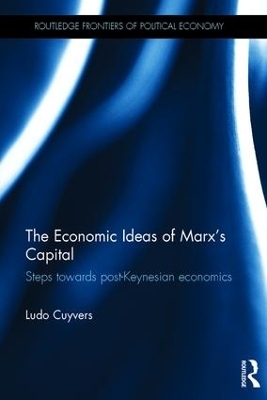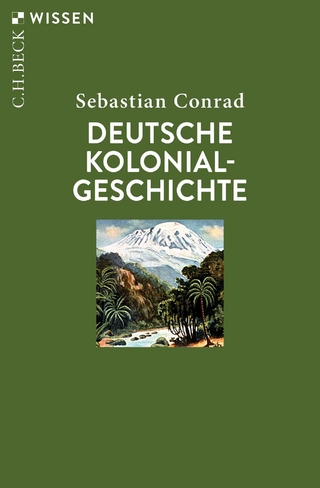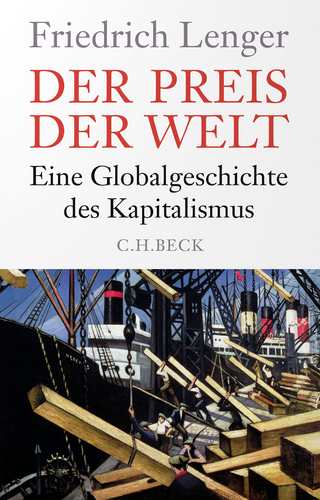
The Economic Ideas of Marx's Capital
Routledge (Verlag)
978-1-138-93897-7 (ISBN)
Starting with Marx’s schemes of reproduction, which, it is shown, are the basis of the linear model of production as used since the 1960s by Piero Sraffa, Michio Morishima and others, the book reviews and assesses Marx’s major economic theses. These include: the labour theory of value; accumulation and technical change and its impact on labour; the concept of unproductive labour; the tendential falling rate of profits; the evolution and determinants of the share of wages in national income; as well as short-run and long-run economic dynamics. The Economic Ideas of Marx's Capital updates the theses of the labour theory of value and the conditions for balanced growth using the recent scholarly literature, and also further develops issues related to Marx’s concept of productive labour. Moreover, the book analyses the intellectual relationship of Marx’s economic theory with post-Keynesian neo-Marxism, particularly in the writings of Michal Kalecki, Joan Robinson and others. By doing so, the book shows the need and possibilities of integrating major insights of Marxist and post-Keynesian theory.
This volume will be of interest to those who wish to explore Marx’s economic theories through a non-ideological approach, as well as students of Marxist economics, post-Keynesian economics and the history of economic thought.
Ludo Cuyvers is Emeritus Professor at the University of Antwerp, Belgium and Extraordinary Professor at North-West University, South Africa.
Contents
Preface
Introduction
Chapter 1: Economic reproduction
Production and reproduction
The Marxist schemes of reproduction : introduction
The workings of the Marxist schemes of reproduction under capitalism
What can be learned from Piero Sraffa’s "standard system"?
The significance of the Marxist schemes of reproduction
Chapter 2: The (mostly quantitative) labour theory of value today
What is the labour theory of value saying?
The transformation problem
Marxian prices of production
Production prices proper
The mathematical formulation of values and prices
Elements of a formal solution to the transformation problem: corrections of Marx’s procedure
Prices of production as the sum of dated labour time
Marx’s "average sector" and Sraffa’s "standard system"
Prices of production as the outcome of iterative adjustments, starting from labour values
What is the logic in transforming values into prices of production?
The rate of surplus value determines the rate of profits, not the other way round (Morishima’s "Fundamental Marxian Theorem")
The transformation of labour values into prices of production: logic or reality?
A short digression into technological coefficients, subsistence wages and the "law of value"
What about monopoly prices?
Post-Keynesian views about the labour theory of value
To conclude
Chapter 3: Towards a better understanding of what will follow – long-term economic growth and dynamics
The "standard system" again
The maximum rate of growth and the attainable economic growth in case of non-necessary consumption
Full versus incomplete realisation of surplus value
What about social necessary consumption?
The contribution of the post-Keynesian neo-Marxists
Chapter 4: Productive and unproductive labour
Spending out of surplus value
Cost-increasing inputs, value creation and the technological inputs structure
The translation of unproductive inputs and outputs in the linear model of production
Prices and cost-increasing inputs in the total inputs structure
Unproductive cost-increasing inputs and the rate of profits
Unproductive labour today and further arguments
Capitalist cost-increasing inputs: productive but wasteful …
Conclusions
Chapter 5: Laws of motion of capitalism - accumulation, technical change and super-profits
Marx on the relationship between capital accumulation, the rate of profits and the wage rate, and the so-called "industrial reserve army"
The capitalist hunger for super-profits as the motivation for technical change and innovation
The effect of technical change on the surplus value and the rate of surplus value
The effect of technical change on the organic composition of capital
An increase in labour productivity with unchanged proportional inputs of means of production
An increase in labour productivity with decreasing proportional inputs of the means of production
An increase in labour productivity with increasing proportional inputs of the means of production
The scope for labour-saving but also capital-using technical change in the pursuit of super-profits
How did the early post-Keynesians look at mechanisation and technical change? The case of Joan Robinson’s "real-capital ratio"
To conclude
Appendix 1: The effect of a general increase in the productivity of labour on the rate of surplus value
Chapter 6: Long-term developments - the tendency of the rate of profits to fall
Marx’s theory of the falling rate of profits - in a nutshell
The rate of profits in the linear production model
The relationship between labour-saving technological change and the rate of profits: generalisations in Okishio’s theorem
The rate of profits in the long run: some statistical data
Chapter 7: Long-term developments - changes in the rate of surplus value, the distribution of income and the class struggle
Absolute and relative surplus value from Marx’s standpoint
Class struggle and the share of labour in value added
Exploitation and class struggle: game-theoretical insights
The degree of monopoly and "mark-up" pricing
The working of the "profits squeeze": some neo-Keynesian and neo-Marxist interpretations
Some statistical evidence
What to conclude?
Chapter 8: The economic cycle and monetary theory of Das Kapital
The economic cycle in Das Kapital
The economic cycle and the post-Keynesian neo-Marxists
Labour values and prices of production in money terms
Money and credit in Das Kapital
The money supply in post-Keynesian economic theory.
Economic crisis and the role of money capital
Notebook B 113
To conclude
Chapter 9: Long-term developments: underconsumption, stagnation, long waves and financialisation
Underspending and incomplete realisation of surplus value in Das Kapital
Underspending based on the schemes of reproduction
The importance of external markets for surplus value realisation in the long run
The importance of military spending for surplus value realisation in the long run
Technological innovations as an "external market"
Long waves in economic activity and accumulation?
The development of the service sector and "financialisation" of the capitalist economy
To conclude
Chapter 10: Reflections, conclusions and an agenda for future research
The importance of the "no nonsense" approach of Das Kapital
The linear Marx-Leontief production model
Which of the fundamental principles of Marx’s economic theory are still intact: value, unproductive labour and the "law of value"?
What about the dynamics in Marx’s economic theory: technological innovation, the rate of profits and exploitation in the long run, economic cycles …?
Is Marx’s economics an independent doctrine, a module of the post-Keynesian theory or a starting point for a post-Keynesian neo-Marxist synthesis?
| Erscheinungsdatum | 25.05.2016 |
|---|---|
| Reihe/Serie | Routledge Frontiers of Political Economy |
| Zusatzinfo | 3 Tables, black and white; 26 Line drawings, black and white; 26 Illustrations, black and white |
| Verlagsort | London |
| Sprache | englisch |
| Maße | 156 x 234 mm |
| Gewicht | 589 g |
| Themenwelt | Geschichte ► Teilgebiete der Geschichte ► Wirtschaftsgeschichte |
| Sozialwissenschaften ► Politik / Verwaltung ► Politische Systeme | |
| Sozialwissenschaften ► Politik / Verwaltung ► Politische Theorie | |
| Wirtschaft ► Allgemeines / Lexika | |
| Wirtschaft ► Volkswirtschaftslehre ► Wirtschaftspolitik | |
| ISBN-10 | 1-138-93897-1 / 1138938971 |
| ISBN-13 | 978-1-138-93897-7 / 9781138938977 |
| Zustand | Neuware |
| Haben Sie eine Frage zum Produkt? |
aus dem Bereich


